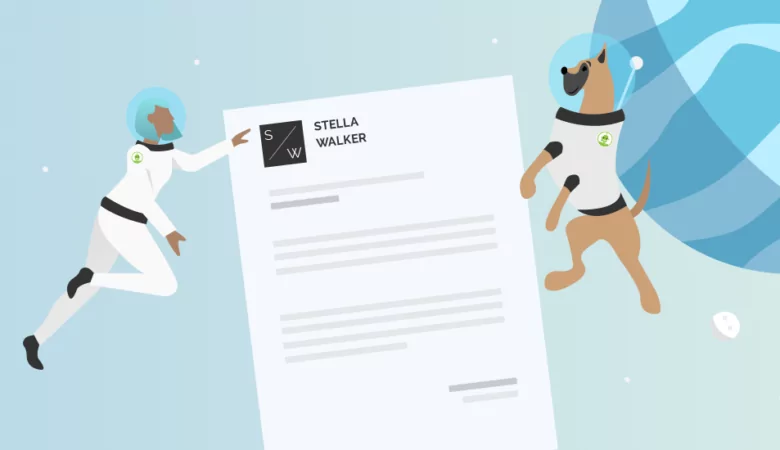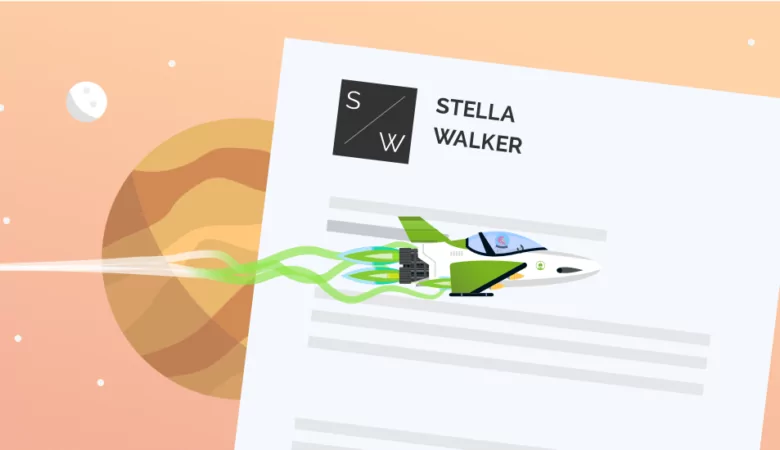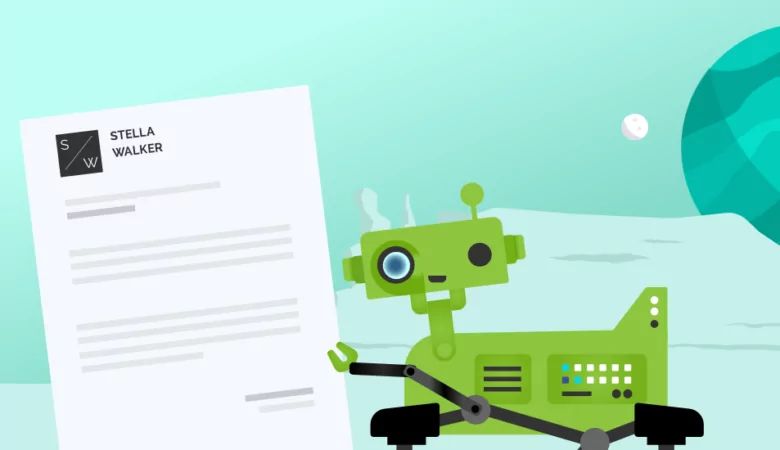
How to Write a Cover Letter in %currentyear% + Great Tips & Samples
Cover letters can make a huge difference in scoring you the all-important job interview. Read ResumeNerd's guide to create the perfect cover letter now!
Cover letters are just as important as your resume and job application when it comes to making a good impression in your job search. Write a cover letter that tells employers what they need to know about your strengths and qualifications using these steps.
What Is a Cover Letter?
A cover letter is a short letter that introduces who you are as an employee to the recruiter and why you would be the perfect fit for a specific position. It’s your first chance to impress prospective employers and inspire them to schedule that coveted first job interview.
Cover letters can immediately set you apart from other applicants who don’t even submit a cover letter. Even if the cover letter is listed as optional, it is still a good idea to take the time to craft one for your job application. While your resume acts as a summary of your work experience and accomplishments, it doesn’t delve into how you can contribute to a new company as an employee. A cover letter for a resume also allows you to reveal more about your personality and background, showing a hiring manager how you connect you to the position you are applying for.
Did you know…
A well-written cover letter not only shows off your career qualifications but also actually demonstrates important skills, including written communication, creativity, attention to detail and motivation.
How to write a cover letter in 6 steps
There are six key elements to writing a great cover letter: the header (including your contact info), a salutation to the person reading your letter, an introduction that hooks the potential employer’s attention, details on your skills and achievements (and why those achievements make you the perfect candidate), a final call to action, and your sign-off.
Step 1. Cover letter header
The header should contain all your contact information. This includes:
- Your full name
- Email address
- Phone number
- (If applicable) Link to portfolio or LinkedIn profile
It should also address the hiring manager directly. You need to include:
- The name of the hiring manager
- Company address
- Hiring manager’s email address
- Company phone number
Good example
Jane Smith, Peoria, MD 12345, 000-0000-000, janesmith@email.com
Kimberley Lewis
MediHealth of Peoria
100 Healthy Circle
Peoria, MD 12345
KLewis@email.com
000-0000-000
Bad example
Jane S., Peoria, 000-000-0000, Crazylady@email.com
Kim @MediHealth of Peoria
Peoria, MD
000-0000-000
Key Tip
When writing your contact information, be sure your email address sounds professional so the hiring manager, recruiter or prospective employer recognizes you are serious about the job.
Step 2. Salutation
One of the best ways to hook a potential employer’s attention is by addressing them by name in the salutation. Try to avoid using any of the following salutations:
- To whom it may concern
- Dear hiring manager
- Dear Human Resources team
- Dear sir or madam
This can come off as impersonal or lazy. You want to perform your due diligence in researching the company you want to work for, so address your letter to the specific person in charge of hiring for this position.
Good example
Dear Mr. Smith,
Bad example
To Whom it May Concern,
Key tip
If the job posting does not include who to direct your cover letter to, do some research on the company website or LinkedIn to see which human resources professional or manager leads the department you’re applying for, and address them directly.
Step 3. Opening Paragraph: Most Impressive Achievements
The first sentence of a cover letter for resume can also be crucial. Many recruiters will often hear phrases such as “I am excited to apply for [Job Position]”. Instead, start by giving the hiring manager a reason or two why you believe you are the perfect fit. This can also help create opportunities to go over other previous work experiences and achievements in the body of your cover letter.
Keep your opening paragraph concise and specific. You’ll be using this as the springboard to more fully describe your skills and experiences in the rest of your letter.
Good example
As a social worker experienced in counseling at-risk youth, including saving the life of a suicidal teenage girl, and am ready to take my career to the next level by applying for the social worker position with MediHealth of Peoria. I am confident that my issue resolution and problem-solving abilities, as well as my experience in the Nassau County School System make me an excellent fit for this position.
Bad example
I am writing today to apply for a position with your company so I can switch out of the school system. I am confident that my social work skills abilities and my experience will make you want to hire me.
Key tip
Grab the reader’s attention with something that potentially no other job candidate can offer the company: a unique skill or career accomplishment.
Step 4. Body paragraphs
This section is perhaps the most critical to the cover letter for job application. Here you need to explain why your previous work experiences and achievements make you the best possible fit for any given position. Having the job description on hand will be especially useful here. Be specific; elaborate on your experiences and how they match this current job description will let the hiring manager know that you are the right person for the job.
Good example
As my attached resume outlines, I have five years of experience working in the social work field. I have provided guidance and emotional support to 300+ adults and teenagers. I am confident that I can achieve similar results for MediHealth of Peoria. With my unique approach, I will provide thorough consultations, accurate assessments and effective treatment plans, with methods that I know are important to your organization. I am looking for an opportunity to demonstrate my dedication to this industry while helping your clients overcome challenging experiences.
Bad example
My resume shows you that I have lots of experience working in this field. I have provided guidance and emotional support to many people. I’ll definitely achieve similar results for your company. I have my own approach to doing things and I can share that with your team. My methods will be a great addition to your organization. Call me.
Key tip
Use the STAR method (Situation, Task, Action, Result) to describe in detail how you have used the skills necessary for the job you’re applying for. Giving concrete examples from your career shows you’re qualified.
Step 5. Closing Paragraph: Call to Action for the Interview
The final paragraph should reiterate your enthusiasm for the position and sum up to the hiring manager why you would be the perfect fit. Finally, end your letter by stating you are available for an interview at their earliest convenience.
Good example
Thank you for taking the time to consider my application. I look forward to the opportunity to speak with you further regarding how I can contribute to the continued success and wellbeing of clients that seek help from MediHealth of Peoria.
Bad example
Please look at my application and resume carefully so I can make the switch from working at the school to working at MediHealth of Peoria as soon as possible.
Key tip
As you’re thanking the reader for considering you a candidate, mention the position you’re applying for once again and reemphasize how you want to contribute to the company’s success.
Step 6. Sign-off
Close your letter with a professional sign-off like “With best regards,” “Sincerely” or
Respectfully.” Using a sign-off that’s too informal will brand you as an unprofessional job candidate.
Good example
Respectfully,
John Smith
Bad example
Chat soon,
John Smith
Key tip
While “Sincerely” may be a professional sign-off, you can show your creativity by using one of the other less used professional sign-offs like “Kind regards.”
How to write a cover letter for resume: key takeaways
Here are some prime points to keep in mind when writing a cover letter:
- Check that your contact information is up-to-date and looks professional.
- Check that you’re addressing the right hiring manager or recruiter.
- Check that you’re not just repeating the same information that’s already on your resume.
- Check that your letter opening provides an interesting “hook” to gain the reader’s attention.
- Check that your body paragraphs provide impressive accomplishments that make you stand out.
- Check that your information is factual with no exaggerations.
- Check to see that there’s a proper call to action in your closing, requesting a job interview.
- Check that your letter is no more than a page long.
- Check spelling and proofread for typos so you’re cover letter is error-free.
- If you need extra help, try using our ResumeNerd cover letter builder to write a letter in minutes.
Cover letter examples
Our cover letter examples show off all of our writing tips in action. Use these cover letter samples as a foundation for your own strong cover letter.
How to write a cover letter: do’s and don’ts
Cover letter do's
- Do explain how you can benefit the employer with your experience.
- Do demonstrate how your soft skills and hard skills helped you achieve a success or two.
- Do research the company so you can say how you fit in with its culture and missions.
- Do read the job description carefully and include specific keywords from the job posting.
- Do ask a friend, family member or mentor to read your cover letter and provide feedback.
Cover letter don’ts
- Don't give all the reasons you are desperate for the job.
- Don't mention the negative aspects of your current job.
- Don’t lie about your qualifications, work history and education.
- Don’t send your cover letter without performing a spelling and grammar check.
- Don’t forget to include a call to action in the closing paragraph asking for an interview.
FAQ: How to Write a Cover Letter
A cover letter for job application should include a combination of your experience, qualifications, skills and passion for the job, company and industry that you’re applying for. You shouldn't repeat your resume verbatim. Instead, pick out your specific best accomplishments that will show your impressive skills and outstanding work ethic. Read your cover letter when complete and be sure that the information is impactful and shows why you stand out from the competition.
Whether you’re applying for an entry level, mid-level or management position, your cover letter must include the following three main things:
- Hook:Capture the reader’s attention at the very start of the cover letter and make the reader want to know more about you by emphasizing a strong skill or career experience.
- Impressive highlights: You want to include showstopping achievements and explanations of key skills that will make the hiring manager stop and say “wow!”
- Call to action: In your closing paragraph, be bold by mentioning that you’re looking forward to meeting for a job interview to provide further information.
You should avoid including certain elements in your letter:
- Regardless of the position that you’re applying for, be sure that the information that you’re presenting is factual.
- Do not exaggerate your qualifications, achievements or academic history.
- Do not bad-mouth your current employer or vent about why you are desperate to leave the company.
- Do not include personal information that isn’t relevant to the job.
- Do not include salary expectations unless an employer tells you to do so.
- Finally, do not overwrite. Focus your cover letter on the three major elements we discuss above.
The answer is actually both yes and no! While there are certain skills and experiences you’ll likely want to display in every cover letter you write, you’ll also want to submit a unique cover letter for every job application so you can tailor the wording to match the job description for the specific job. This ensures you include the right keywords that are used by applicant tracking systems (ATS) to select only qualified candidates. Using cover letter samples and our Cover Letter Builder can help you craft different versions of your cover letter. Customizing your letter tells a prospective employer that you understand the company culture, values, mission statement and other important facts about the job role you want.
Cover letter templates can help give your professional cover letter for a resume a professional layout that stands out. Following our free templates and job-specific cover letter examples can also give you a better idea of what hiring managers are looking for in a good cover letter. If you're still having trouble writing an effective cover letter, ResumeNerd’s blog has plenty of helpful cover letter writing tips, cover letter templates and other cover letter examples for you to use.
Cover letters should not be longer than one page. Ideally, they should be around 3/4 of a page, but if you have lengthy work experience and many accomplishments that will make you truly stand out, then use a full page to describe them. ResumeNerd has lots of tips for writing a short but powerful cover letter.








